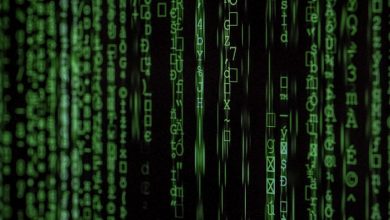The Role of Blockchain Forensics in Asset Recovery

- Understanding the Basics of Blockchain Forensics
- Challenges and Opportunities in Asset Recovery Using Blockchain Forensics
- The Impact of Blockchain Technology on Financial Investigations
- Case Studies: Successful Asset Recovery Through Blockchain Forensics
- Regulatory Frameworks for Blockchain Forensics in Asset Recovery
- Future Trends in Blockchain Forensics and Asset Recovery
Understanding the Basics of Blockchain Forensics
Blockchain forensics is a crucial aspect of asset recovery in the digital age. It involves the analysis of blockchain transactions to trace and track illicit activities such as money laundering, fraud, and other financial crimes. By understanding the basics of blockchain forensics, investigators can uncover valuable insights into the movement of assets and identify the individuals behind suspicious transactions.
One of the key principles of blockchain forensics is the transparency of the blockchain ledger. Every transaction is recorded on a public ledger that is accessible to anyone, making it possible to trace the flow of funds from one address to another. This transparency allows investigators to follow the money trail and identify patterns of behavior that may indicate criminal activity.
Another important aspect of blockchain forensics is the use of specialized tools and techniques to analyze blockchain data. These tools can help investigators extract valuable information from the blockchain, such as the origin and destination of funds, the timing of transactions, and the identities of the parties involved. By leveraging these tools, investigators can piece together the puzzle of illicit activities and gather evidence to support asset recovery efforts.
Challenges and Opportunities in Asset Recovery Using Blockchain Forensics
Asset recovery using blockchain forensics presents both challenges and opportunities for investigators and law enforcement agencies. The decentralized and pseudonymous nature of blockchain technology can make it difficult to trace and recover assets that have been involved in illicit activities. However, the transparency and immutability of blockchain transactions also provide a unique opportunity to track and identify the movement of assets across the network.
One of the main challenges in asset recovery using blockchain forensics is the sheer volume of transactions that take place on the blockchain. With millions of transactions occurring daily, investigators must sift through large amounts of data to identify suspicious activity. Additionally, the use of privacy coins and mixing services can further obfuscate the trail of illicit funds, making it harder to trace their origins.
On the other hand, blockchain forensics also offers opportunities for asset recovery by providing a detailed record of transactions that can be analyzed to identify patterns and connections between different addresses. By using advanced analytics and visualization tools, investigators can uncover hidden relationships and track the flow of funds through the blockchain, ultimately leading to the recovery of stolen or illicitly obtained assets.
The Impact of Blockchain Technology on Financial Investigations
Blockchain technology has revolutionized the way financial transactions are conducted, providing a secure and transparent ledger that is immutable and decentralized. This innovation has had a significant impact on financial investigations, as it allows for a more efficient and effective way to track and trace assets. By leveraging blockchain forensics, investigators can analyze transactions on the blockchain to uncover illicit activities and identify individuals involved in financial crimes.
One of the key benefits of using blockchain technology in financial investigations is the ability to follow the flow of funds in real-time, providing a clear picture of how assets are moved and where they end up. This level of transparency can help investigators identify patterns of behavior and connect the dots between different transactions, ultimately leading to the recovery of stolen or misappropriated assets.
Moreover, blockchain forensics can also help in identifying money laundering activities, as transactions on the blockchain are timestamped and cannot be altered. This means that investigators can track the movement of funds from one wallet to another, making it easier to detect suspicious behavior and take appropriate action.
Case Studies: Successful Asset Recovery Through Blockchain Forensics
Several case studies have demonstrated the effectiveness of utilizing blockchain forensics in successful asset recovery efforts. By leveraging the transparency and immutability of blockchain technology, investigators have been able to trace and recover assets that were previously thought to be lost forever.
One notable case involved a fraudulent ICO where investors lost millions of dollars. Through blockchain forensics, experts were able to track the flow of funds across multiple wallets and exchanges, ultimately leading to the identification of the perpetrators and the recovery of a significant portion of the stolen assets.
In another instance, a high-profile hacking incident resulted in the theft of a large sum of cryptocurrency. By analyzing the blockchain, investigators were able to follow the digital trail left by the hackers and recover the stolen funds, providing much-needed relief to the victims.
These case studies highlight the crucial role that blockchain forensics plays in asset recovery efforts. By harnessing the power of blockchain technology, investigators can uncover valuable insights that would otherwise remain hidden, ultimately leading to successful outcomes in even the most complex of cases.
Regulatory Frameworks for Blockchain Forensics in Asset Recovery
Regulatory frameworks play a crucial role in the field of blockchain forensics for asset recovery. These frameworks provide guidelines and standards for investigators to follow when tracing and recovering assets stored on the blockchain. By adhering to these regulations, forensic experts can ensure that their investigations are conducted ethically and legally.
One key aspect of regulatory frameworks for blockchain forensics is the requirement for investigators to obtain proper authorization before accessing blockchain data. This authorization helps prevent unauthorized access to sensitive information and ensures that investigations are conducted in a transparent and accountable manner.
Additionally, regulatory frameworks outline the procedures and techniques that forensic experts can use to analyze blockchain transactions. These procedures help investigators identify suspicious activities, track the movement of assets, and ultimately recover stolen or misappropriated funds.
Moreover, regulatory frameworks also address the issue of data privacy and protection. Investigators must comply with data protection laws and regulations to safeguard the privacy of individuals whose information is stored on the blockchain. By following these guidelines, forensic experts can maintain the integrity of their investigations while respecting the rights of all parties involved.
Future Trends in Blockchain Forensics and Asset Recovery
The future of blockchain forensics and asset recovery is promising as technology continues to evolve. With the increasing use of blockchain technology in various industries, the need for effective forensic tools to track and recover assets is becoming more critical.
One of the emerging trends in blockchain forensics is the use of advanced analytics and machine learning algorithms to analyze blockchain data. These tools can help investigators identify suspicious transactions, trace the movement of assets, and uncover illicit activities on the blockchain. By leveraging these technologies, forensic experts can improve their ability to track down and recover stolen or lost assets.
Another trend in blockchain forensics is the collaboration between law enforcement agencies, regulatory bodies, and blockchain experts. By working together, these stakeholders can share information, expertise, and resources to enhance their capabilities in investigating and recovering assets on the blockchain. This collaborative approach can lead to more successful outcomes in asset recovery cases.
Furthermore, the development of new forensic techniques and tools specifically designed for blockchain analysis is expected to drive advancements in asset recovery efforts. These tools can help investigators extract valuable information from blockchain transactions, identify patterns of fraudulent behavior, and ultimately recover assets more efficiently. As blockchain technology continues to evolve, so too will the tools and techniques used in blockchain forensics and asset recovery.
In conclusion, the future of blockchain forensics and asset recovery looks promising with the advancement of technology, collaboration among stakeholders, and the development of new forensic tools. By staying ahead of emerging trends and leveraging innovative solutions, forensic experts can enhance their ability to investigate and recover assets on the blockchain effectively.




